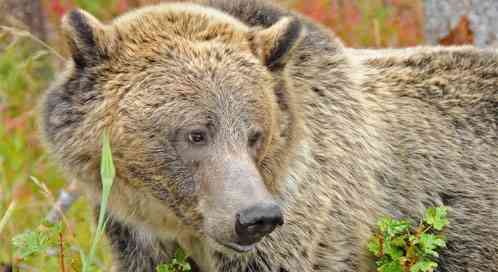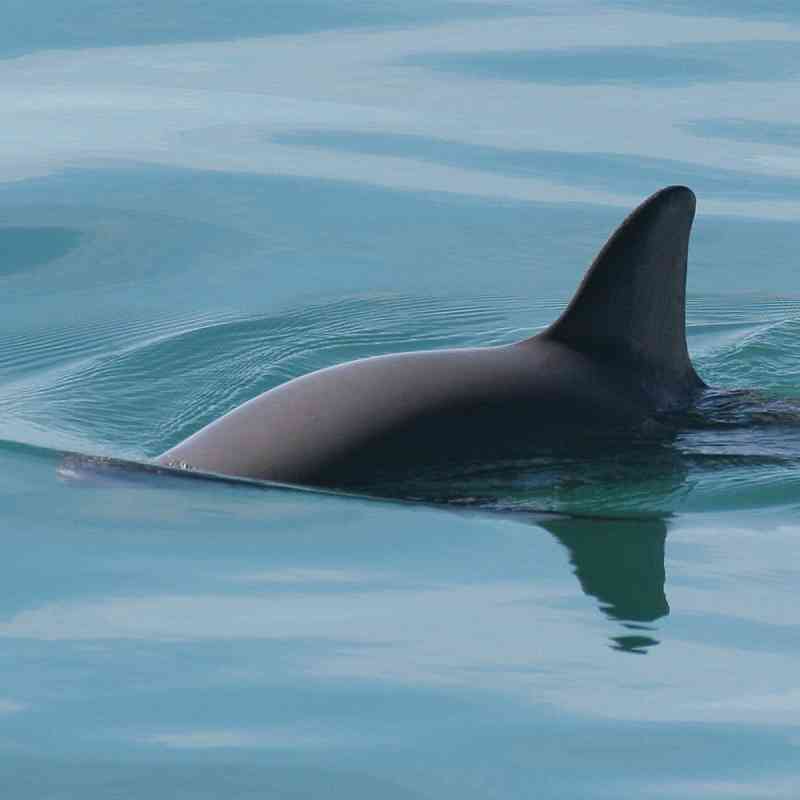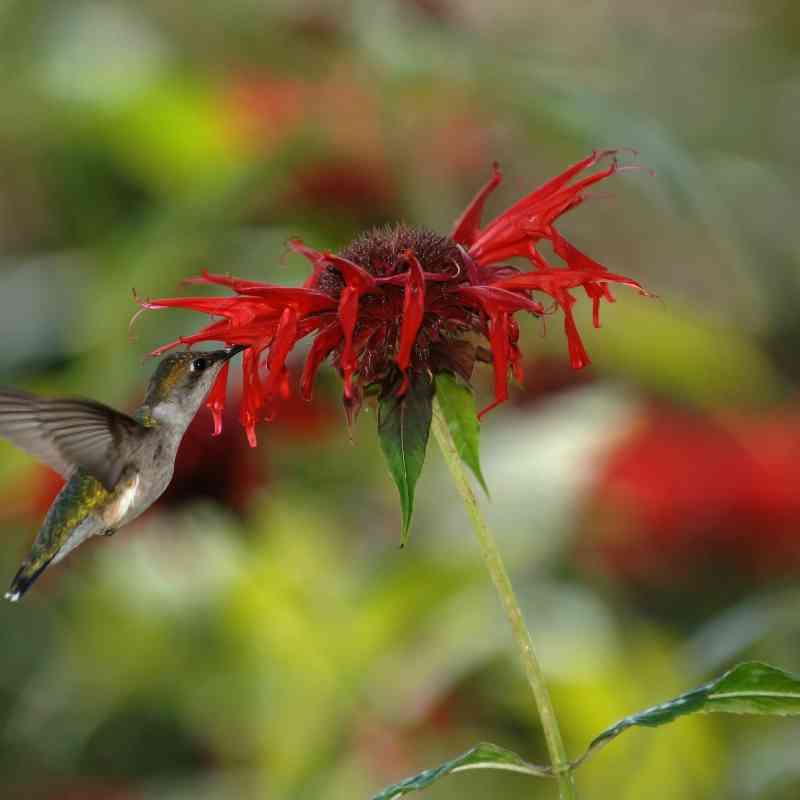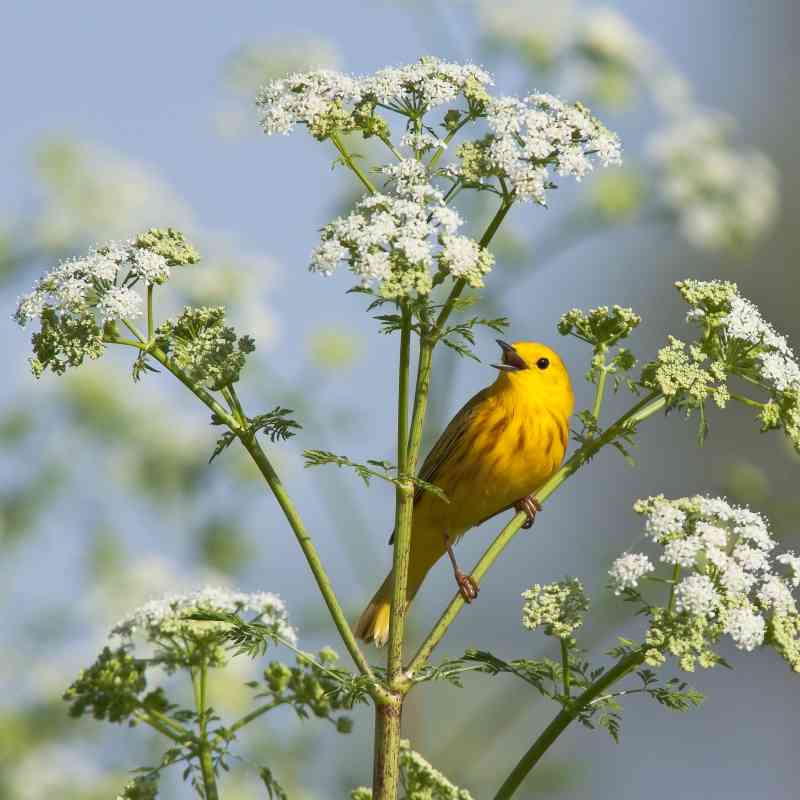Last week, we shared an interview with Patti Sowka of the Living with Wildlife Foundation and the IUCN Bear Specialist Group Human Bear Conflict Expert Team, in which she gave us an inside look at what it takes for a product to be officially “bear-resistant,” an important label as bears and humans continue to come into conflict over things like trash or livestock. Today, we have the story of the encounter that drove Patti to pursue a career in making it possible for bears and people to share the same landscape.
I had just bought my first house in Alberton, Montana. Not even a month after I moved in, I was lying on my couch watching TV with my two old Golden Retrievers at my feet. I happened to glance out my sliding glass door onto my deck, and noticed a large, brown animal walking on the ground below. I thought to myself “that’s a big lab!” and then I realized that none of my neighbors had a chocolate lab! It took a minute to sink in, but I finally realized that it was a bear!
(story continues below)
My dogs hadn’t been alerted to the bear yet and were still sleeping soundly, so I started thinking about what to do next. By the time I looked back out the glass sliding door, the bear was standing right on the other side looking in at ME! The first thing I noticed was that this wasn’t just any bear. This was a grizzly! The next thing I noticed was that the bear was sporting a collar. I knew this meant one of two things. Either the bear was being monitored as part of a research project, or more probably, based on the bear’s behavior, it had a history of conflicts with people and was being monitored so it could be hazed as part of an aversive conditioning effort.
Either way, I was not feeling too comfortable with a grizzly bear standing about three feet away from me with nothing but a sliding glass door between us. I realized that tonight was one of the few nights I actually had the glass door closed. Many nights I left the door wide open so my dogs could come and go outside as they needed to while I was still up and working around the house. My guardian angel was certainly looking out for me that night!
 My dogs finally got scent of the bear, woke up and began barking. Their barking startled the bear and he did a little hop, spun around, and very casually walked back down the steps of my deck and started back down my driveway. Then he laid down in the driveway and just kicked back until my neighbor came barreling up the drive in his pickup to warn me. The bear then headed up the canyon towards my other neighbors, so we called to give them a heads-up.
My dogs finally got scent of the bear, woke up and began barking. Their barking startled the bear and he did a little hop, spun around, and very casually walked back down the steps of my deck and started back down my driveway. Then he laid down in the driveway and just kicked back until my neighbor came barreling up the drive in his pickup to warn me. The bear then headed up the canyon towards my other neighbors, so we called to give them a heads-up.
I called the local bear managers to report the sighting and prayed that the bear would stay out of trouble and disappear into the woods. I didn’t want this to end badly for him, but I didn’t have much faith, given how comfortable he seemed so close to a house, that he had much of a chance. Less than a week later, wildlife managers lethally removed him about 30 miles from my house, after he visited many other residences and approached another woman in her screened porch. There had been extensive efforts to change his behavior and educate residents, but all the heroic efforts of the bear management team to keep him alive and out there as a wild bear were not successful. The attractants that littered the landscape of Mineral County had already sealed his fate. The myriad of garbage cans, dumpsters, backyard dumps, burn barrels, bird feeders, livestock feed, compost piles and chicken coops were just too much of a temptation for a hungry 3 year-old grizzly bear.
That encounter also sealed my fate. The writing was on the wall. When I had looked into that bear’s eyes, something changed in me forever. When I found out he was dead, I vowed I was going to dedicate my life’s work to trying to prevent that from happening again. Of course many bears have died since then, but the work that many people are doing has prevented the needless deaths of many black bears and grizzly bears. And even more importantly, it has helped to keep countless people safe by not allowing bears to become accustomed to finding unnatural food sources.
Through programs like that of the Living with Wildlife Foundation and Defenders’ own coexistence work, we put real solutions on the ground in bear country to help bears and humans share the landscape. Teaching families how to take these simple steps to keep bears away, and giving them the tools to do it, helps keep both people and bears safe.
comments
Wildlife & Wild Places





